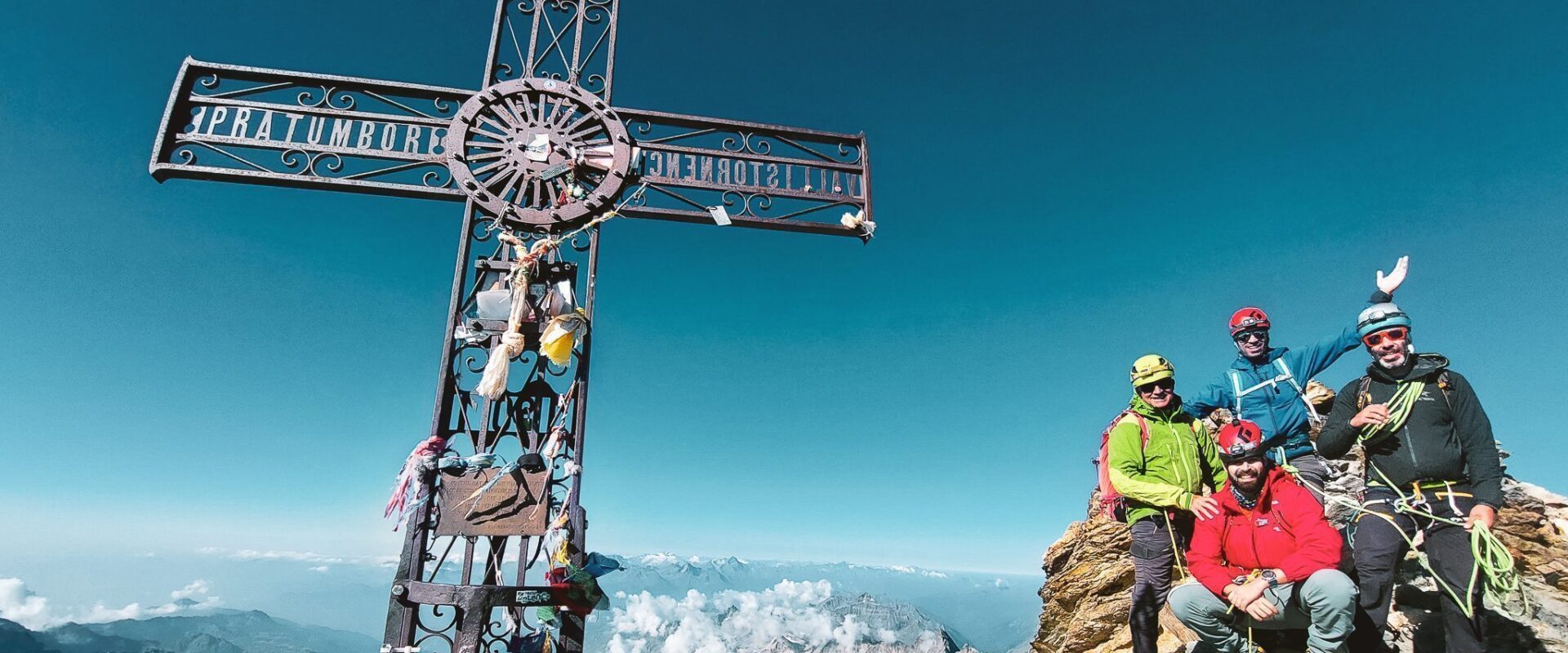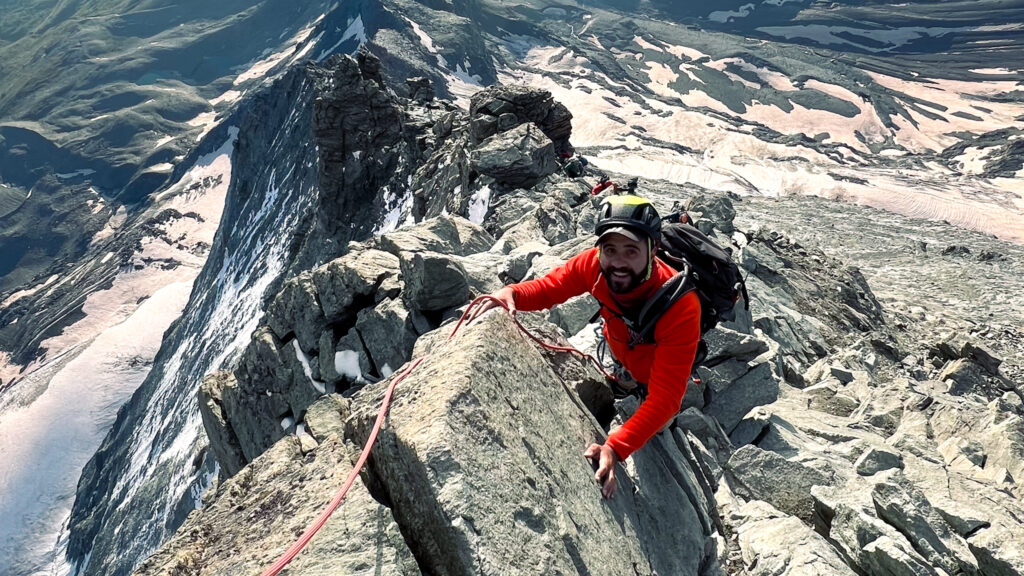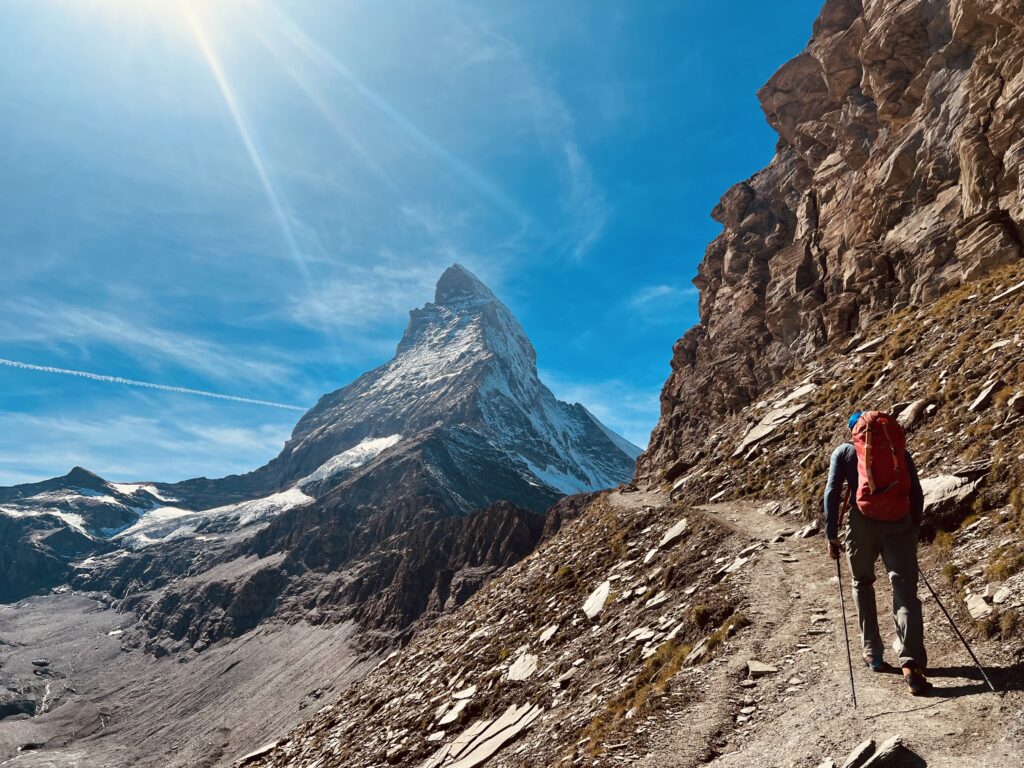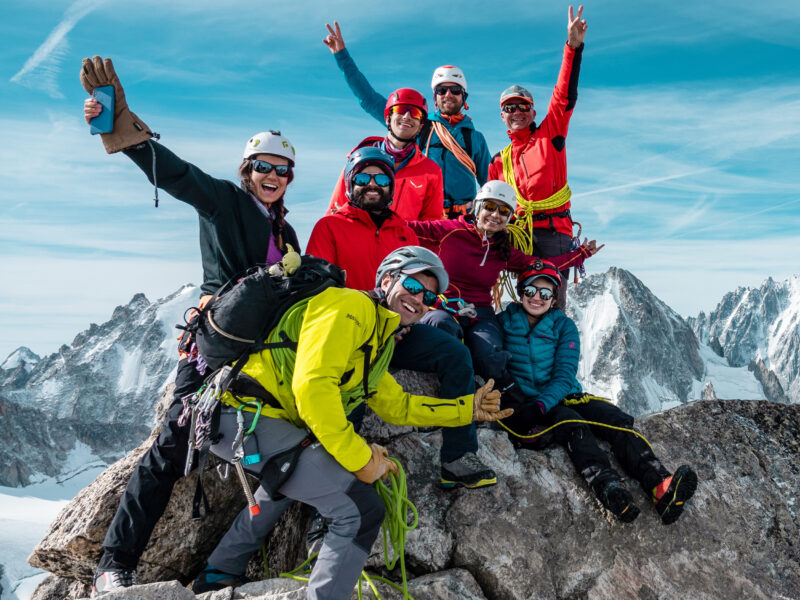BY Rami Rasamny | March 18 2025
How to Train for the Matterhorn Climb: A Comprehensive Guide

Climbing the Matterhorn is an exhilarating and challenging feat, requiring both physical and mental resilience. While the climb may seem daunting, the good news is that with the right training, preparation, and mindset, you can confidently take on the challenge. Whether you’re preparing for the Matterhorn climb independently or aiming for an organised ascent, this guide will provide you with a comprehensive training plan that will help you build the strength, endurance, and mental toughness needed for success.

The Key Components of Training for the Matterhorn
Training to climb the Matterhorn involves several key aspects: cardiovascular fitness, strength, flexibility, mental resilience, and climbing-specific skills. Together, these elements will prepare you to move efficiently, maintain focus, and overcome obstacles during your ascent. Let’s break them down:
1. Cardio: Build Aerobic Capacity
Cardiovascular fitness is essential for any high-altitude climb, and the Matterhorn is no exception. During the climb, you’ll be required to sustain a steady pace for several hours, often on steep and uneven terrain. Building cardio capacity will ensure that you can keep moving without tiring too quickly, especially in the thin air at high altitudes.
You can focus on these activities to boost your aerobic endurance:
- Running: A great way to build stamina, especially on varied terrain.
- Hiking: Incorporate uphill hiking to simulate the mountain’s steep slopes.
- Uphill Treadmill Walking: Use an incline treadmill to mimic mountain climbing.
- Cycling and Swimming: These full-body workouts improve lung capacity and leg strength.
Aim for 3–4 cardio sessions per week, each lasting 30–60 minutes, to build your endurance.

2. Strength: Protect Your Joints and Build Muscle Endurance
While cardio helps you stay on the move, strength training ensures that your body is prepared for the physical demands of the climb. The Matterhorn will test your muscle endurance, especially in your legs, core, and upper body. To avoid fatigue and reduce the risk of injury, it’s important to build strength in these key areas.
Focus on these strength exercises:
- Push-ups: Build upper body strength, which is essential for stability and movement.
- Squats: Strengthen your legs to power through steep ascents.
- Lunges: Improve your balance and leg strength, helping you tackle tricky footing.
- Planks: Build core strength, which is crucial for maintaining posture during long climbs.
Strength training should be incorporated 2–3 times per week, focusing on compound exercises that target multiple muscle groups.
3. Flexibility: Improve Mobility
Flexibility is a crucial but often overlooked component of climbing. Yoga is an excellent way to improve both flexibility and mobility, particularly in your hips, shoulders, and back. It also helps with balance, posture, and mental focus—qualities that are essential when climbing at high altitudes.
Incorporate yoga into your routine 1–2 times per week to:
- Enhance flexibility and mobility.
- Develop mental clarity and calmness.
- Improve breathing and posture, especially during difficult sections of the climb.
Yoga also helps your body recover after intense training sessions and promotes a sense of relaxation and focus.
4. Mental Resilience: Prepare Your Mind
Mental toughness is just as important as physical strength when preparing for a climb like the Matterhorn. You will face moments of discomfort, fatigue, and doubt, and your ability to stay calm, focused, and positive will help you overcome these challenges.
Yoga and mindfulness are excellent tools for building mental resilience:
- Meditation: Practice mindfulness meditation to develop focus, calm, and emotional control.
- Breathwork (Pranayama): Techniques like Ujjayi breath help regulate your breath and calm your mind during stressful moments.
- Visualization: Imagine yourself reaching the summit, which builds confidence and reduces anxiety.
- Isometric Holds: Hold challenging positions, like planks or wall sits, to train both your body and mind to endure discomfort.
Additionally, mental resilience is about cultivating patience. Yoga teaches you to stay present and embrace discomfort—an important lesson when you encounter tough stretches on the mountain.

5. Interval Training: Boost Agility and Endurance
Incorporating high-intensity interval training (HIIT) will improve your ability to handle bursts of intensity, which are common during a climb like the Matterhorn. HIIT alternates between short bursts of high-intensity exercise and recovery periods, helping you build endurance, strength, and agility.
Exercises like burpees, jump squats, and mountain climbers will help you adapt to the intense, varied effort needed during your climb. Perform 2–3 HIIT sessions per week to simulate the effort required to tackle steep sections and long stretches of climbing.
6. Climbing-Specific Training: Simulate the Terrain
While you may not have a mountain available for training, you can still simulate climbing by incorporating indoor or outdoor rock climbing into your routine. This helps you develop the grip strength, technique, and confidence needed to navigate technical rock sections of the climb.
- Indoor Rock Climbing: Helps you build upper body strength and climbing technique.
- Outdoor Bouldering: Provides real-world experience on uneven and challenging surfaces.
If you don’t have access to a climbing wall, focus on grip strength exercises like hanging from a pull-up bar or using a resistance band for strength training.

7. Training Schedule: Dedicate 3–6 Months
To adequately prepare for the Matterhorn climb, dedicate at least 3–6 months to training. Start with a solid foundation of cardio and strength. In the last few months, incorporate more climbing-specific exercises and mental training to prepare your body and mind for the challenges of the ascent.
During the first month, focus on building aerobic endurance and strength. Gradually increase the intensity and duration of your workouts as you move toward the final month of preparation. In the last month, increase the intensity of your HIIT workouts, climbing sessions, and mental resilience training.
Conclusion
Training for the Matterhorn climb is a challenging yet rewarding experience that requires careful preparation, both physically and mentally. By focusing on cardio, strength, flexibility, mental resilience, and climbing-specific training, you can build the endurance, stability, and focus required for this iconic ascent. Whether you’re taking on the challenge alone or in a group, consistent and structured training will prepare you to face the climb with confidence, strength, and clarity. With dedication and the right mindset, you’ll be ready to summit one of the world’s most renowned peaks.
About The Author
Rami Rasamny is the founder of Life Happens Outdoors, a premium adventure travel community dedicated to transforming lives through curated outdoor experiences. A mountaineer and entrepreneur, Rami has led teams on some of the world’s most challenging peaks, from the Alps to the Himalayas. His mission is to make adventure accessible, transformative, and safe for all who seek to push their limits and Come Back Different.
About Life Happens Outdoors
At Life Happens Outdoors, we believe in the power of nature to transform lives. As proud members of the Adventure Travel Trade Association (ATTA) and the World Travel & Tourism Council (WTTC), our team of certified guides and outdoor professionals is committed to the highest standards of safety, sustainability, and excellence.
Discover more about our story and mission on our Meet LHO page, or explore our curated adventures such as the Tour du Mont Blanc Trek, the Climb of Kilimanjaro, and Chasing the Northern Lights.















